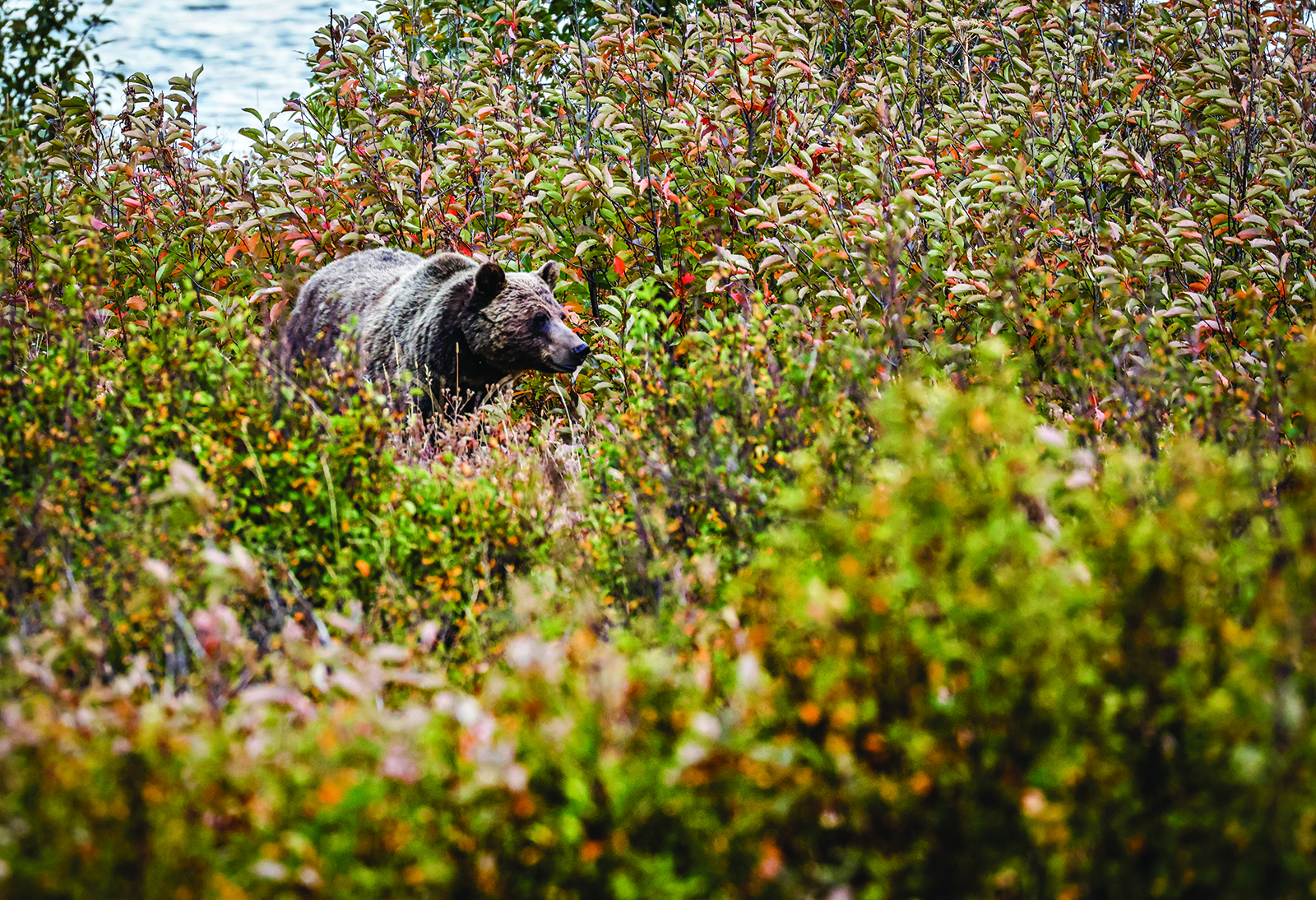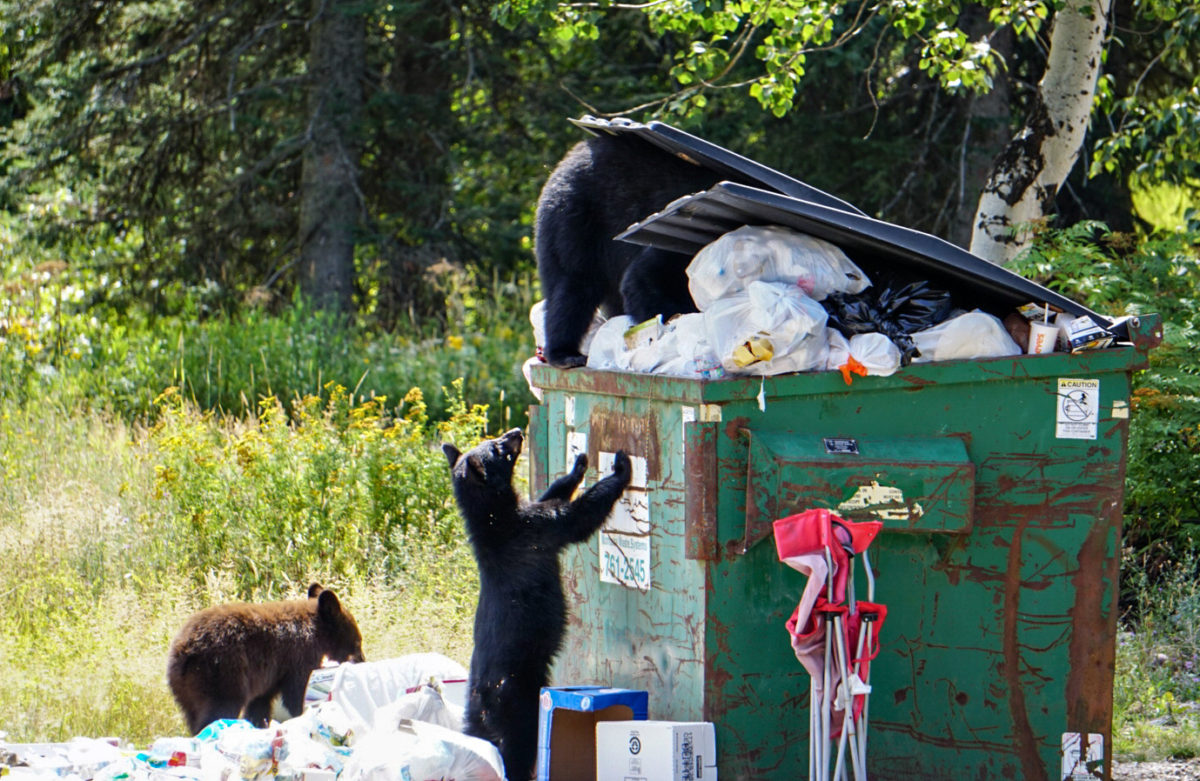Human-Bear Conflicts Kept Northwest Montana Grizzly Specialists Busy in 2024
While preventative measures such as electric fences helped reduce human-bear conflicts in much of the region, bear specialists in the Flathead Valley recorded 203 total calls and four known grizzly bear mortalities
By Tristan Scott
Even though grizzly specialist Justine Vallieres responded to fewer human-bear conflict calls in northwest Montana this year compared to last, she filled what little downtime that afforded her by ramping up her education and outreach curriculum.
“We’re pushing preventative measures and trying to set as few traps as possible,” Vallieres, a wildlife conflict management specialist for Montana Fish, Wildlife and Parks (FWP), told members of the Interagency Grizzly Bear Committee (IGBC), who gathered for their annual winter meeting on Dec. 3 and 4 in Choteau. “I can set trap after trap after trap, but if the unsecured attractants are still there, the problem will keep recurring.”
For Vallieres, pushing preventative measures meant installing more electric fences, observing that residents seem more willing to entertain the idea of non-lethal conflict prevention as a means to secure their livestock and grain. She also delivered 18 talks and attended six educational events, all the while keeping up with a steady stream of conflict calls related to grizzly and black bears.

Speaking to bear experts and agency officials whose work spans the Northern Continental Divide Ecosystem (NCDE), Vallieres explained that she’s responsible for human-bear conflicts in a region beginning just south of the Whitefish city limits and running up to the Canadian border, as well as Eureka, the North Fork, West Glacier, and Marias Pass. Her FWP colleague, Wildlife Conflict Management Specialist Erik Wenum, is responsible for portions of the Flathead Valley extending south of Whitefish into the Swan Range and east to the Spotted Bear Wilderness area.
Although Wenum could not attend the meeting, Vallieres said their shared strategy for long-range conflict mitigation centers on prevention and co-existence, pointing to evidence of grizzly bears living in the wildland urban interface without any history of human conflict. Trapping and relocating bears, she said, is a short-term solution to a persistent problem.
“Relocation is kind of a band-aid solution, whereas tackling the issue at its root cause prevents future conflicts from occurring,” she said.
Vallieres said she handled 44 conflict calls that required 33 responses in 2024 versus 96 total conflict calls requiring 65 responses in 2023. A response is counted as the team’s initial response to a conflict site, not all the other instances in which the bear managers have to revisit the site, to check culvert traps, for example.

Wenum, on the other hand, encountered an uptick in calls and responses in 2024 compared to the year prior. So far this year, he handled 159 conflict calls in the southern portion of Region 1, responding to 64 of them. That’s up from the 128 calls and 41 responses in 2023. Although Wenum’s management actions this year included 20 grizzly bear captures and two removals, his preventative efforts included installing nearly 60 electric fences and securing 71 grain bins in the Lower Valley, using either electrified pallets or so-called “unwelcome mats,” which are placed in front of grain bins to discourage bears.
Grizzlies in the Lower 48 states are protected as a threatened species under the federal Endangered Species Act (ESA). In the NCDE recovery area, the grizzly population has grown to about 1,100 bears. In Montana, Idaho and Wyoming, governors and state management agencies have petitioned the federal U.S. Fish and Wildlife Service to delist grizzlies from the ESA and return the populations to state oversight, citing a spike in conflicts and saying that recovery objectives have been met.

Dillon Tabish, FWP’s regional communication and education program manager, said that although the agency’s conflict specialists responded to a relatively high volume of calls this season, proactive approaches can help reduce the potential for future conflicts. He highlighted the progress of communities that are taking measures to reduce conflicts through Bear Smart Community support grants, including conflict reduction education, bear spray education, school programs, and by adopting bear-resistant garbage cans.
Two years ago, the IGBC executive committee adopted the IGBC Bear Smart Community framework to further support collaborative community-led strategies that benefit both people and bears by reducing conflicts and improving human safety in areas where people and bears share the landscape.
Bear Smart communities in the NCDE include: Whitefish, Columbia Falls, the North Fork Flathead River Valley, Missoula, Potomac, Alberton, Clinton, Seeley Lake, the Bitterroot Valley, Anaconda, Philipsburg, Drummond, and Choteau.